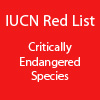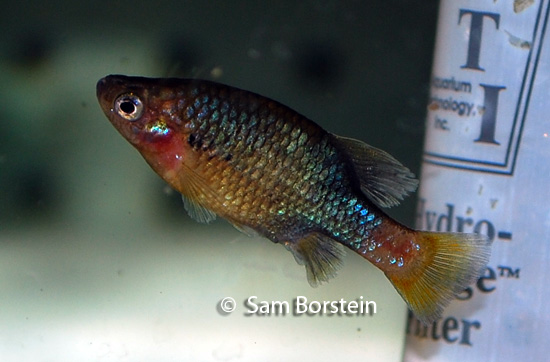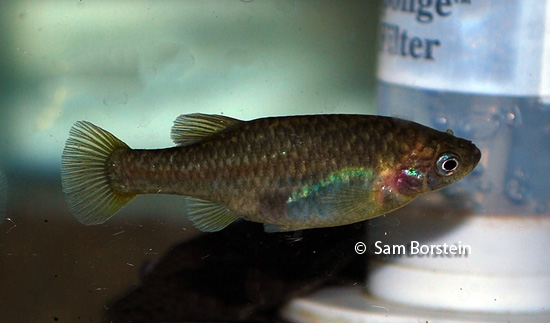Xenotoca eiseni
Rutter, 1886
Red Tail Goodeid



Above: A male Xenotoca eiseni. Photo by Sam Borstein.
Etymology:
Genus- Xenotoca= xeno=strange, toko= birth (Greek).
Intro:
The Red Tail Goodeid is a critically endangered species of Goodeid from Mexico that is threatened by the introduction of invasive species. This nippy fish is very active, colorful, and has some attitude. They also are a very interesting hump-backed shape. It's been proposed that this species and Xenotoca melanosoma may actually be members of an as of yet described genus.Distribution:
Like all Goodeid, the Red Tail Goodeid is from Mexico. They are common throughout cooler lakes, rivers and streams on the Pacific slop of the country.
Size, Maturity, and Sexual Dimorphism:
Size: Males- 2 inches, Females- 2.75 inches
Maturity: 1.5 inches
Sexual Dimorphism: Males are smaller than females and possess a green body. Males also possess an andropodium, which is used for reproduction. This can be seen as a notch on the males anal fin.

Above: A Red Tail Goodeid female. Photo by Sam Borstein.
Care:
The Red Tail Goodeid is very easy to keep. They are aggressive and will attack much larger fish, but won't do much damage outside of that. Caution needs to be taken when mixing this fish with other species. I've seen them shred the fins of larger cichlids. You do not want to put them in with anything smaller than they are as they may attack them. A young group can easily be kept in a 10 gallon species tank though.
Diet:
These fish are omnivorous and will eat anything in captivity. A good mixed flake is perfect. They especially like live baby brine shrimp.
Breeding:
Red Tail Goodeids breed like any other Goodeid. This species has a very long gestation period of 58-68 days. The fry are huge when born and they number between 15 and 70. The fry hang at the top of the tank for their first week out of the womb. Fry are easy to raise on either baby brine shrimp or crushed flake and grow quickly. The parents will generally ignore the fry and they can be raised in the same tank as the parents. It's a good idea to put a floating plant in the tank to offer the fry some cover.
Conclusion:
This is another great livebearer and is critically endangered and needs our help. Red Tail Goodeids have become more and more available recently in the hobby. These fish are very colorful and lively.
References:
- IUCN. IUCN Red List of Threatened Species. <http://www.iucnredlist.org>.
- Miller, R.R., Minckley, W.L. & Norris, S.M. (2005) Freshwater Fishes of México. Museum of Zoology, University of Michigan, & University of Chicago Press, Chicago, 652 pp.
